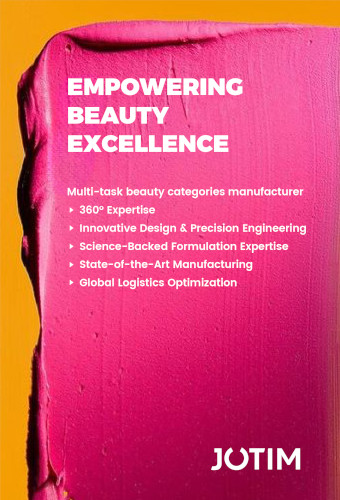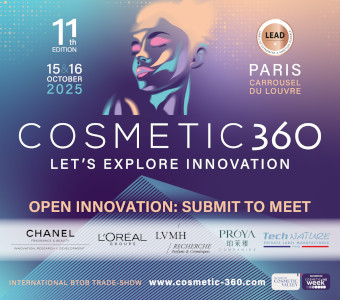Even if classics are playing their cards right, and even if China is perfuming itself again, and Europe is finding its way back to the shops, the situation is far from back to normal for glassmakers and even worse in Travel Retail, which has still not found its second wind. Stoelzle runs at 50% of its capacity, the same goes for Heinz Glas but "occasionally" explains the Company. On average, the French sites of Verescence are operating at 75% of their normal activity. At the Mers-les-Bains plant, two out of three furnaces are running. In Spain and the United States, the bottling activity is around 60% and 75% respectively.
In this uneasy economic environment, producers are banking on their agility. For Heinz "it is even a permanent concern", and the same is true for Stoelzle who also boasts "its level of service". Verescence is reviewing its operating methods, accelerating its digital transformation and testing new tools. "As an international Group with strong local roots, the crisis has reinforced our strategy," explains Jean-Luc Leblond, Sales and Marketing Director. "Being more agile means further improving our flows by reducing the complexity of the supply chain."
Another avenue for growth is to adapt the offer to changes in demand. Like other categories, the perfume sector is also recruiting more on the internet. "Visibility is indeed very limited in this segment, but it is an important area of development for our customers," confirms Verescence, who is already working on improving the resistance of the glass, with an innovative coating "making it more resistant to shocks".
But the attention of glassmakers is mostly focused on circular economy and sustainable development. And this on several levels. Following the Citeo recommendations, they offer designs with a lower impact on the environment and that facilitate the recycling of bottles. A concern that has existed for more than twenty years at Heinz Glas. "With a water-soluble lacquering, we can claim to have been a pioneer in the use of eco-friendly decorative raw materials," says Rudolf Wurm, Sales Director. Last year, Verescence delivered on its commitment to eliminate 100% of solvent-based solutions on its finishing lines. Beyond VOC emissions, the glassmaker who is studying - together with some of his customers - more eco-responsible decorative processes, has developed a tool to take into account the impact of finishing operations on the recyclability of a glass container. Stoelzle has been working for several years on the Quali Glass Coat 2.0, a new powder coating decoration process that reduces the CO2 impact by nearly 77%. "We have also furthered this technology with the Tigital process (in partnership with the Tiger Company), which allows a photo-quality screen printing with a CO2 reduction of 85% while maintaining the possibility of recycling the glass," specifies Étienne Gruyez, CEO of Stoelzle Masnières Parfumerie.
More globally, as furnaces remain the main sources of CO2 emissions linked to glass production, manufacturers have announced several investments to reduce their environmental impact. For instance, at the beginning of 2021 Stoelzle will rebuild a furnace which "will use the latest technologies". Heinz Glas has opted since 2016 for a green hydroelectric source to supply its German sites, like with the new furnace at the Kleintettau site. To date, most of Verescence furnaces are new. "They have, on average, gained 15% energy efficiency compared to the previous generations. Reducing the carbon footprint will inevitably be gradual and part of a long-term strategy, a furnace having a lifespan of around ten years," explains Jean-Luc Leblond.
As for the circular economy component, all glassmakers have set up plans for the refilling of their bottles. Concerning their bottles and an increase in the cullet rate, all glassmakers have optimization projects in their sleeves. The German glassmaker, who proposes a glass with a PCR rate of between 10 and 20%, has decided to build a next-generation furnace "allowing greater ambitions," reveals Rudolf Wurm. After the Infinite Glass launched in 2008, and then the NEO Infinite Glass in 2014 with 25% PCR, Verescence will very soon dedicate its main furnace in Mers-les-Bains to the production of glass with a 10% PCR content. While Stoelzle Masnières has significantly increased its cullet rate while maintaining glass quality, Etienne Gruyez considers "it is more important to look at the overall impact of the bottle".
Despite their commitment to meet the perfume market’s new requirements, glassmakers will not post a positive balance sheet for 2020. "Our financial results will have deteriorated and we expect a year down by around 20% compared to 2019. To protect our cash flow, we have implemented significant savings plans and postponed some investments, with the will to preserve those linked to priority areas like CSR, quality and continuous improvement," explains Jean-Luc Leblond. Heinz Glas has taken a series of measures to cut down costs and minimize the economic impact. "We are paying particular attention to the Company’s cash flow, and to this end, we have engaged very precise management of our stock levels," notes Rudolf Wurm. For their part, Stoelzle officials believe it is still too early to have a clear vision of the 2020 balance sheet. "Things are changing constantly and very quickly," confirms Etienne Gruyez. "We have imagined different scenarios with up to 25 to 30% drops in sales. We will have to be as responsive as possible so as not to lose the few opportunities that will arise".




































